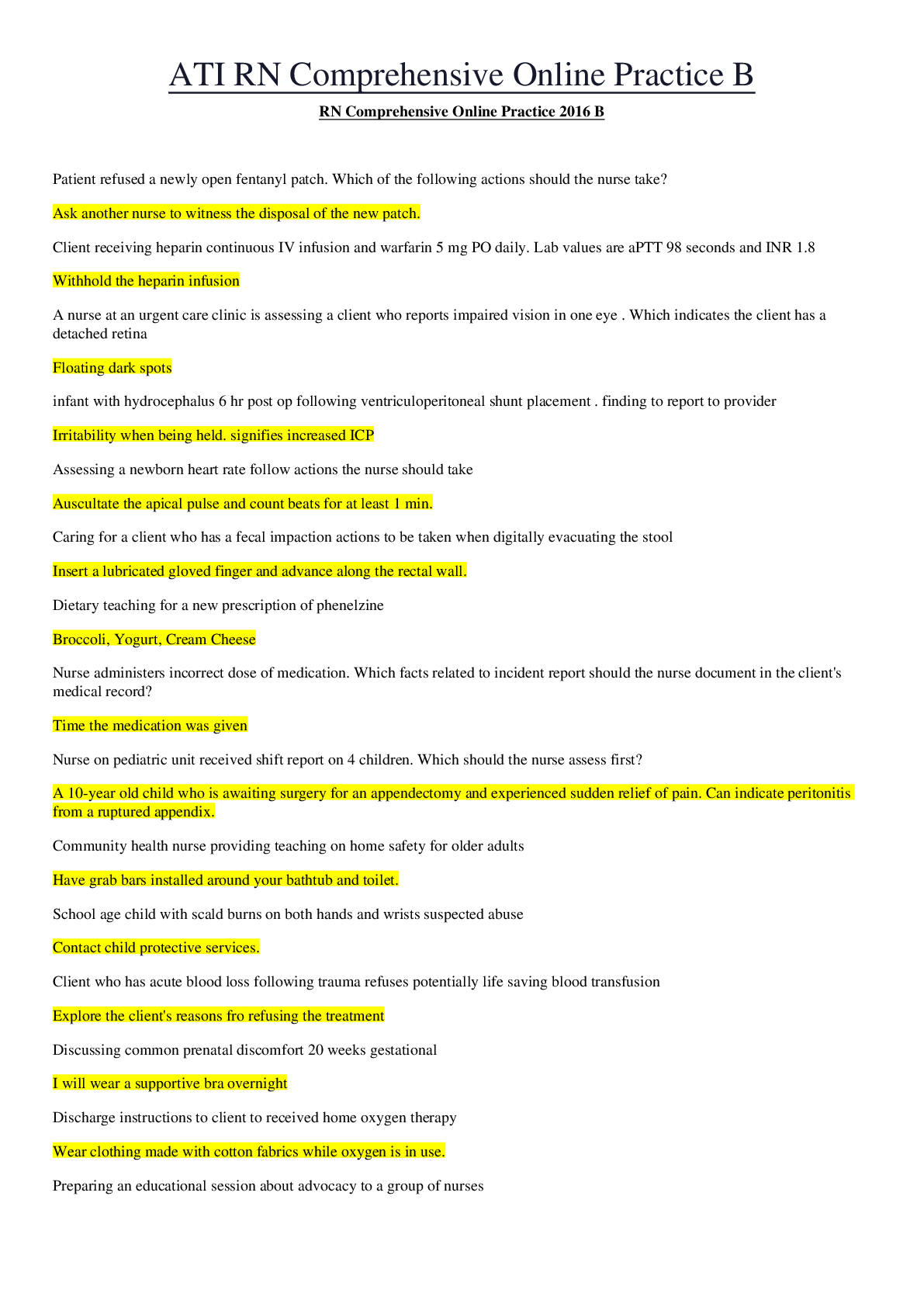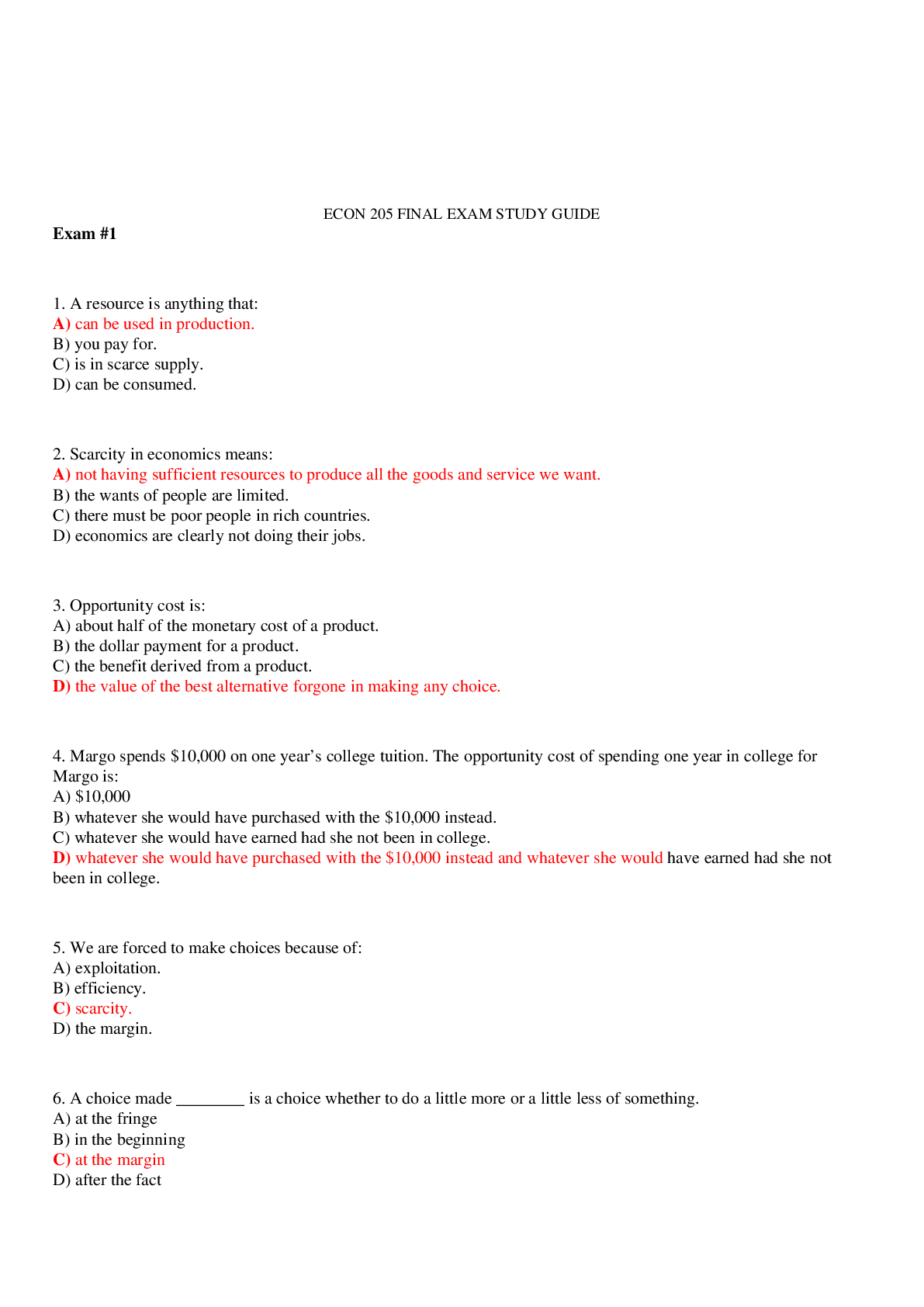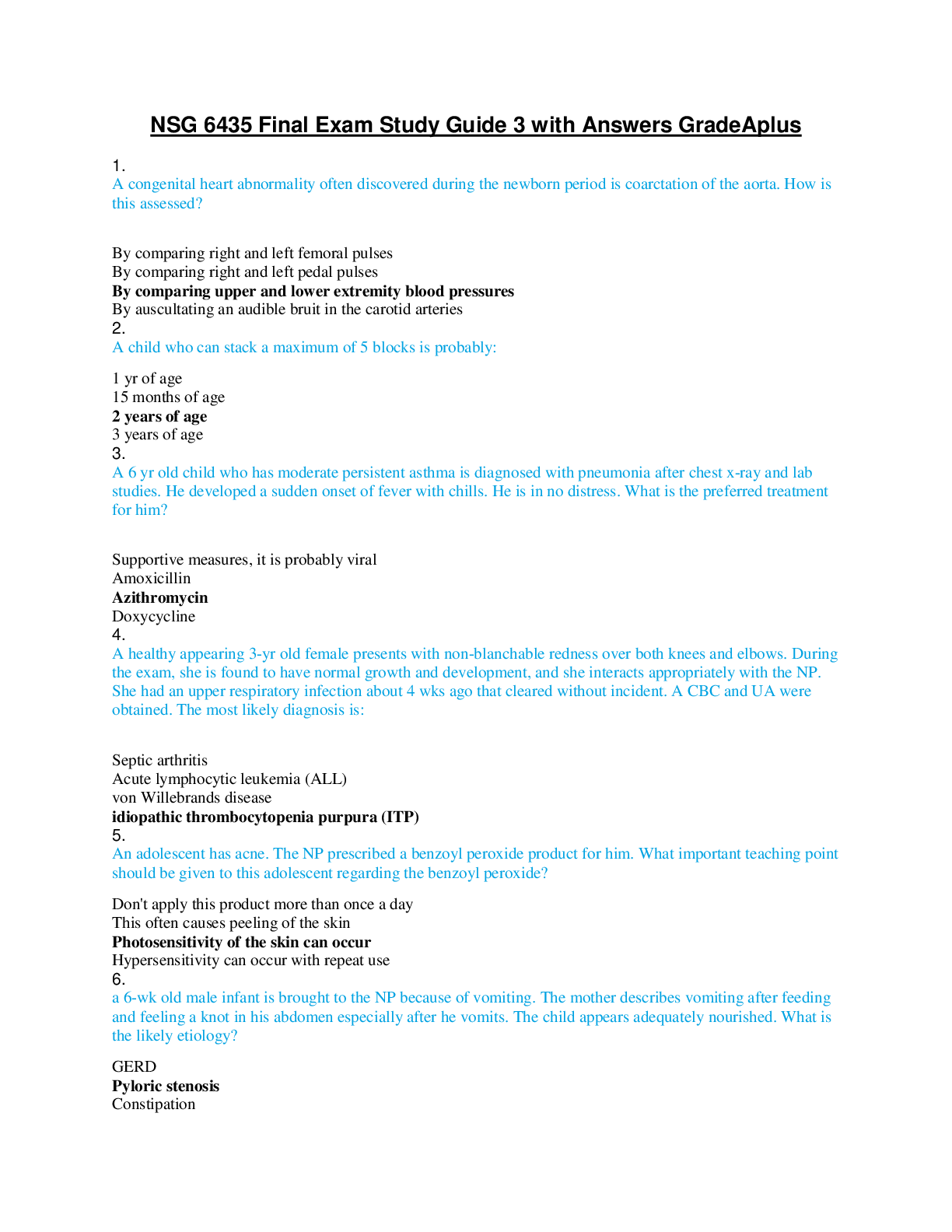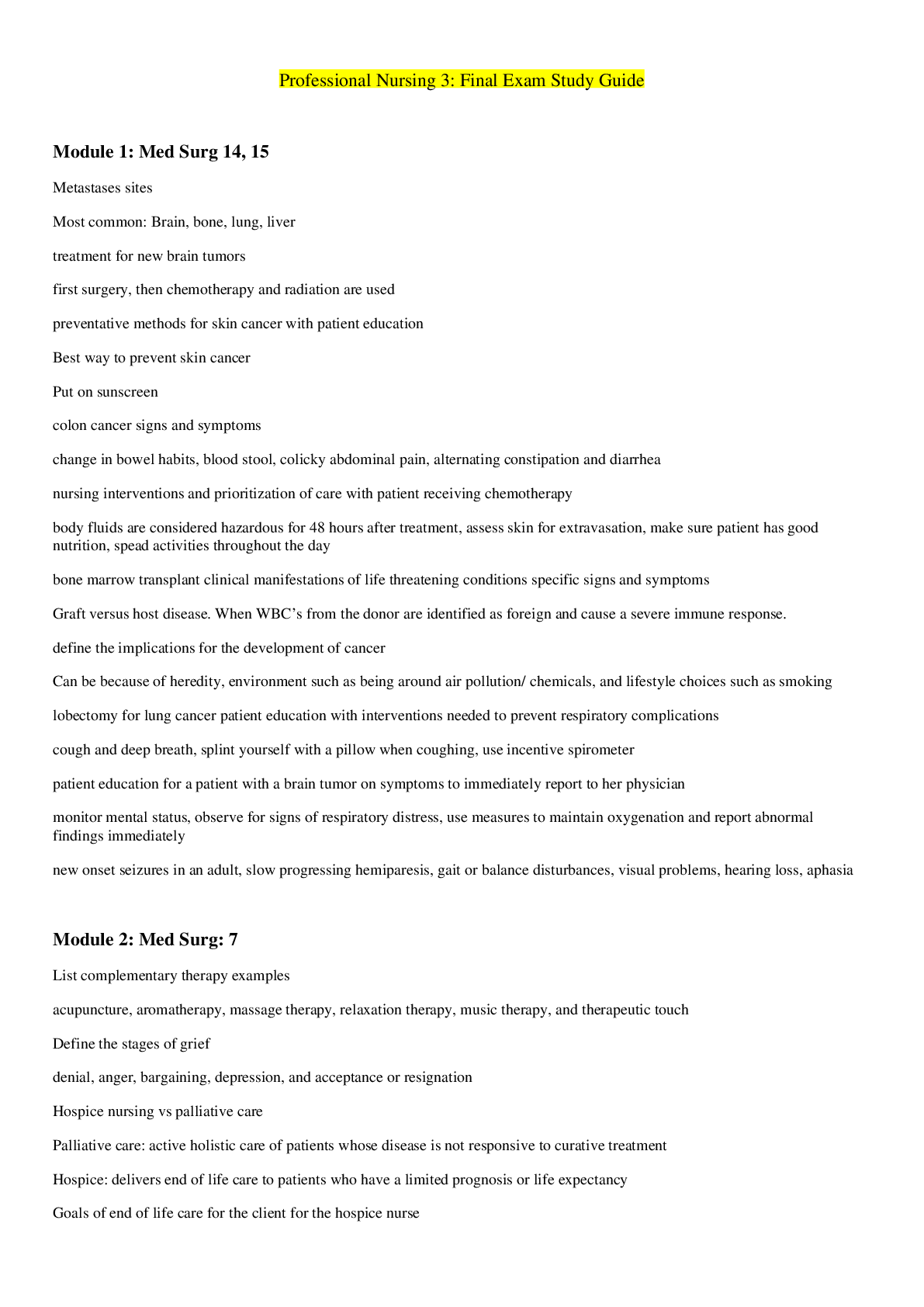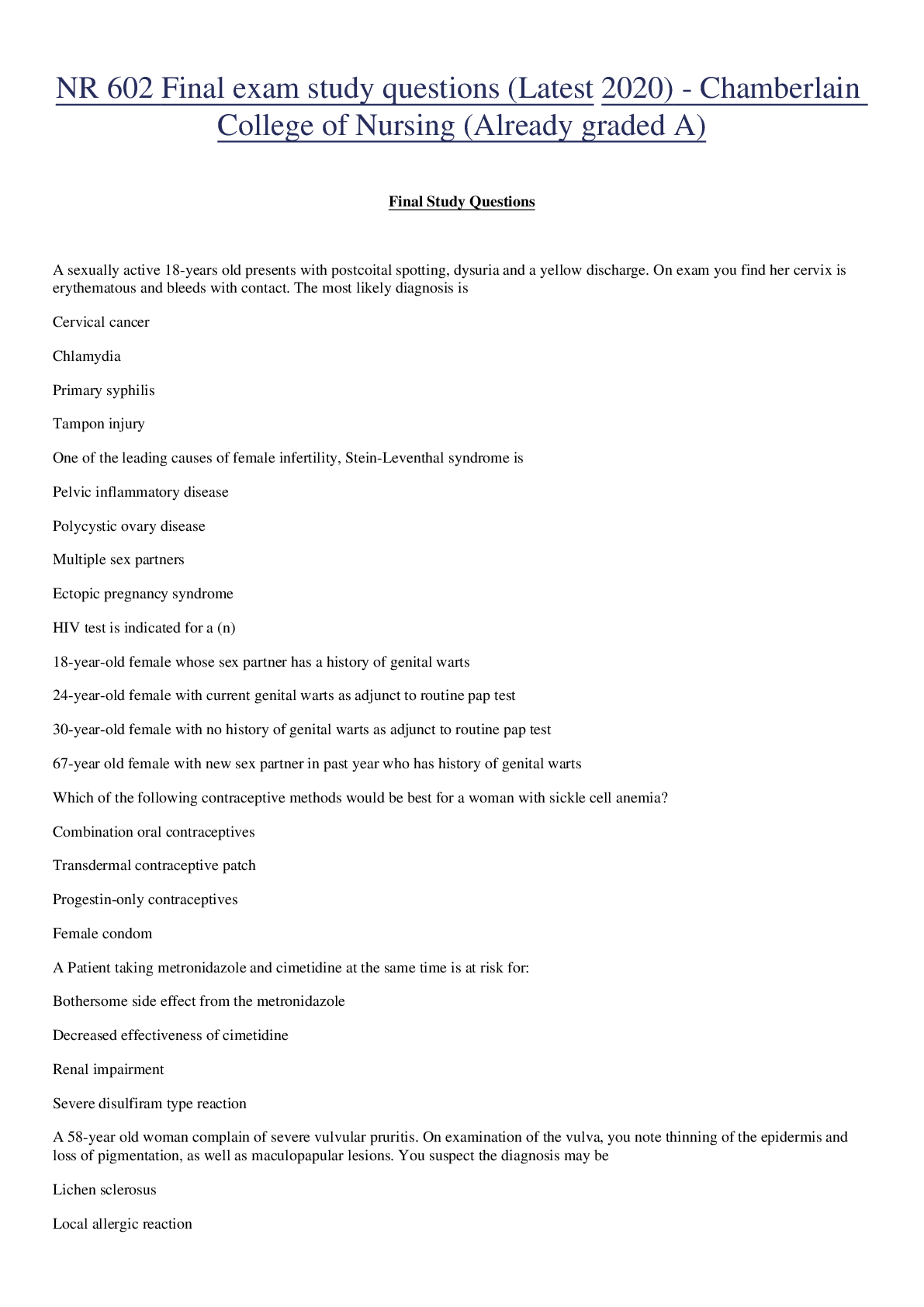*NURSING > EXAM > NURS 261 Final Exam Study Guide_A Grade | Health Assessment for Nursing Practice (All)
NURS 261 Final Exam Study Guide_A Grade | Health Assessment for Nursing Practice
Document Content and Description Below
NURS 261 Final Exam Study Guide Health Assessment for Nursing Practice Virginia Commonwealth University School of Nursing Study Guide for Final Exam 2019 ABDOMEN 1. Identify the anatomy ... of the abdominal cavity. a. The abdominal cavity is the largest cavity in the body and contains the stomach, small and large intestines, liver, gallbladder, pancreas, spleen, kidneys, ureters, bladder, adrenal glands and major vessels. b. Esophagus lies outside abdominal cavity but is vital part of gastrointestinal (GI) system. c. 2. Describe the anatomical landmarks used in the assessment of the abdomen. 3. Describe the expected findings from inspection of the abdomen. a. Surface characteristics should be smooth. Silver white striae; scars; and a very faint vascular network may be present. The umbilicus should be centrally located b. Skin color may be paler than other parts of the body because of lack of exposure c. Contours may be round, flat or scaphoid. A flat contour is found in muscular or athletic adults. A round contour is found in adults with poor muscle tone or subcutaneous fat. A scaphoid contour is found in thin adults d. The abdomen should move smoothly and evenly with respirations i. Females exhibit thoracic movements ii. Males exhibit abdominal movements e. Peristalsis is not visible 4. Describe the process for auscultating the abdomen for bowel sounds, and the expected findings. a. Bowel sounds are produced by the movement of air and fluid through stomach, small and large intestines. Because of this listening in all four quadrants is not necessary. A bowel sound heard in one quadrant can be hear in another quadrant. b. Process: use diaphragm of stethoscope lightly and listen in a systematic progression. RLQ, RUQ, LUQ, LLQ. i. Cannot say BS absent unless you listen for 4-5 minutes without hearing anything c. Findings: sounds that are high pitched gurgles or clicks. i. Hypoactive (5 sounds or lower) ii. Normoactive (5-35 sounds) iii. Hyperactive (over 35 sounds) 5. Explain the order of assessment techniques of the abdomen, including the rationale for the order. a. Auscultate the abdomen- this is before palpation so that the presence of absence of bowel sounds or pain is not altered b. Auscultate for arterial and venous vascular sounds-listen for bruit c. Percuss the abdomen(Special circumstance)- should hear tympany except for the area around liver then you would hear dullness d. Palpate the abdomen light for tenderness and muscle tone-palpate over the area of pain last e. Palpate the abdomen deeply for pain, masses and aortic pulsation 6. Identify at least two uses of auscultation in the abdominal exam. a. To notice the presence of bowel sounds i. Decreased or absence of bowel sounds occur with mechanical obstruction or bowel obstruction b. To listen for bruit sounds i. A bruit indicates a turbulent blood flow by narrowing of blood vessels ii. Bruits over the aorta suggest an aneurysm iii. Normal vascular sounds are not heard 7. Be able to select health history questions related to the abdomen and GI system. a. Past health history questions i. Have you had problems with your abdomen or digestive system in the past? Esophagus? Stomach? Intestines? Liver? Gallbladder? Spleen? If yes, describe ii. Have you had surgery of your abdomen or urinary tract? If yes, describe. Has the surgery required that you change any of your former routines such as the food you can eat or bowel or urinary elimination? How have you adjusted to the effects of these surgeries? iii. Have you had problems with your urinary tract in the past? iv. Do you ever experience leaking of urine? When does this occur? Do you ever use pads, tissue or cloth in your underwear to absorb urine? 8. List the commonly reported problems of the abdomen and GI system. a. GERD i. GERD: ii. Flow of gastric secretions up into esophagus. iii. Clinical findings: 1. Heartburn 2. Regurgitation 3. Dysphagia (difficulty swallowing) b. Peptic ulcer disease i. Peptic ulcer disease is ulcer occurring in lower end of esophagus, stomach, or duodenum. ii. Patients complain of burning after eating. c. Crohn’s disease i. Chronic inflammatory bowel disease (IBD)—is also called regional enteritis or regional ileitis. ii. Clinical findings: 1. Patients complain of severe abdominal pain, cramping, diarrhea, nausea, fever, chills, weakness, anorexia, and weight loss. d. Ulcerative colitis i. Ulcerative colitis, a chronic IBD, starts in rectum and progresses through large intestine. ii. Clinical findings: 1. Patients complain of severe abdominal pain, fever, chills, anemia, and weight loss. 2. Patient experiences profuse watery diarrhea of blood, mucus, and pus. e. Diverticulitis i. Diverticulitis is inflammation of diverticula, herniations through muscular wall in colon. ii. Clinical findings: 1. Patients complain of cramping pain in the lower left quadrant, nausea, vomiting, and altered bowel habits, usually constipation. 2. Abdomen distended and tympanic; decreased bowel sounds and localized tenderness. f. Viral hepatitis i. Viral hepatitis: Inflammation of liver from viruses. ii. Clinical findings: 1. Common symptoms: Anorexia, vague abdominal pain, nausea, vomiting, malaise, and fever. 2. Enlarged liver and spleen are classic findings. - - - - - - --- - - - - - Continued [Show More]
Last updated: 2 years ago
Preview 1 out of 30 pages
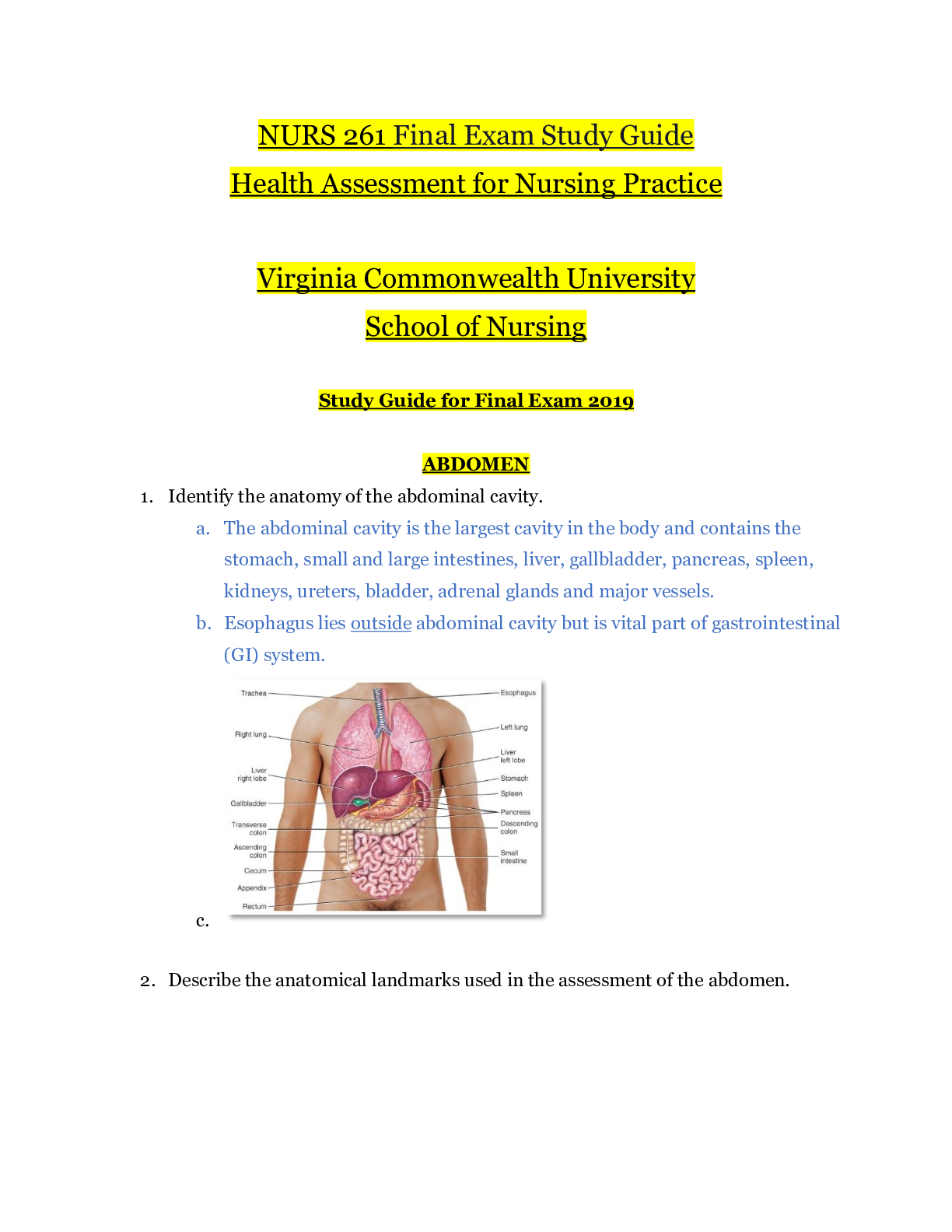
Buy this document to get the full access instantly
Instant Download Access after purchase
Buy NowInstant download
We Accept:

Reviews( 0 )
$14.50
Can't find what you want? Try our AI powered Search
Document information
Connected school, study & course
About the document
Uploaded On
Mar 04, 2021
Number of pages
30
Written in
Additional information
This document has been written for:
Uploaded
Mar 04, 2021
Downloads
0
Views
131








 – University of the People.png)
